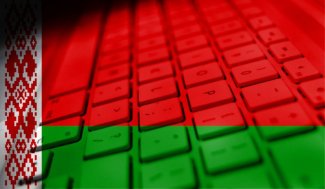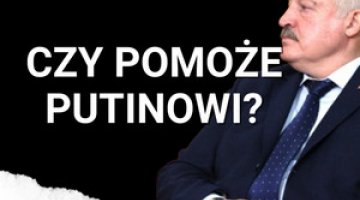Is the crisis over? The economic situation in Belarus after two years of recession

In 2017, Belarus’s GDP went up 2.4%, the first positive result since 2014. This meant an exit from a two-year recession, further proof of which includes an upward trend in industrial production, low inflation and a relatively high level of currency reserves. It appears that Belarus has returned to the path of economic growth, above all as an effect of the improvement of the situation on the global fuel markets, resulting in increasing income from the sale of petroleum products, one of its main exports. The fact that the Belarusian-Russian dispute over the terms of oil and gas supplies from Russia, which had continued for more than a year, was resolved in April 2017 has also had a positive effect. Another important factor was the improvement of the economic situation in Russia, which is the key market for a significant section of Belarusian exports. In turn, the Belarusian government’s policy has only contributed to improving the country’s economic situation to a marginal extent, although the record-low inflation level last year is doubtless a merit of the central bank. Apart from this, moves aimed at preserving the ineffective economic system have prevailed. Heavy industry, most of which is ineffective, is still supported mainly due to President Alyaksandr Lukashenka’s fear of the social destabilisation that might be provoked by massive dismissals of personnel from decommissioned plants. The government is continuing its policy of administratively regulating pay rises for the same reason. The reforms launched, for example introduce facilitations for doing business (including the unprecedentedly liberal decree regulating the operation of the IT sector which has been rapidly developing over the past few years); but they will not lead to a comprehensive reconstruction of the inefficient economic model, nor lay the foundations for stable economic growth.
Signs of recovery with debts in the background
The economic growth seen in 2017 brought about an increase in the value of GDP by around US$6 billion as compared to 2016, reaching US$52.7 billion. It picked up after the recession in 2015–16, when it had fallen by 3.9% and 2.6% respectively. Thus the losses have not been made up fully, although it can be said that the Belarusian economy is beginning to enter onto a path of growth.
The key factors of economic growth have been increasing domestic demand[1] and industrial production (the latter rose by 6.1% last year). The potassium fertiliser sector, an important branch of the Belarusian economy, has also increased its output. Fertiliser sales (mainly to non-European markets) increased by 15%, generating income of US$2.2 billion. An upward trend has also been observed in the agricultural and food sector; this is linked above all to increasing demand on the Russian market which, despite selectively imposed phytosanitary barriers, is still the outlet for 90% of Belarus’s food exports. The total value of exports in this category reached US$5 billion. There has also been an rise in the output, and consequently in sales, to the Russian market for products of the machine-building industry, including tractors and trucks. It is worth noting that the value of exports of the products of the Belarusian arms industry has been increasing for years; last year, it (along with services in this sector) generated income worth US$1 billion, i.e. 15% more than a year before[2]. The petrochemical industry provided an important stimulus for development. However, rising oil and petroleum product prices on global markets were the main factor in this case, which automatically improved the profitability of Belarusian fuel exports. The resolution of the dispute with Russia over the terms of oil supplies to the Belarusian refineries in Novopolotsk and Mozyr[3] was settled, which stabilised the level of supplies at almost 18 million tonnes annually; this also had a positive effect on the overall economy. The Belarusian oil sector has accounted for 20%-25% of total export revenues for years, and the factor which decides on the profitability of this sector (apart from the market prices) is the preferential conditions of oil supplies from Russia, which is Belarus’s sole supplier of oil[4]. As a result, although exports of Belarusian petroleum products reached 12.3 million tonnes in 2017 and, in quantitative terms, was 700,000 tonnes less than in 2016, their value increased by US$1.3 billion (over 30%) and totalled US$5.3 billion, which accounted for around a fifth of export revenues as a whole.
As a result, Belarusian exports rose by 24% last year, and were worth US$29 billion in total. It is worth noting that sales to the EU rose by as much as 39%, and the positive balance increased from US$136 million in 2016 to US$1.2 billion. However, Belarus had a negative balance with all its other main trade partners, and traditionally the highest deficit was generated in trade with Russia (above all due to the imports of oil and gas, as well as the Belarusian industry’s demand for Russian components): it reached US$6.7 billion, and was more than US$2 billion higher than in 2016. Belarus’s trade in aggregate in 2017 generated a total deficit of US$5 billion (US$950 million higher than a year before). The increasing deficit is proof of the continuing poor diversification of goods exported from Belarus, the country’s high degree of dependence on Russian raw material supplies, and the low competitiveness of the Belarusian industry, which makes it impossible to reduce import levels in many areas. At the same time, the high deficit in foreign trade is a serious burden to currency reserves. Admittedly the central bank was able to increase the reserves in 2017 by US$2.3 billion, to a level of US$7.3 billion, the best result since 2013[5]. However, this was achieved not through increasing income from exports but above all by taking new foreign loans[6]. As a result, Belarus’s foreign debt rose last year by 22.6% – to US$16.7 billion – and its value towards the end of the year slightly exceeded 30% of GDP. With the internal debt added, the state’s debt has already reached 40% of GDP and, according to forecasts from the Ministry of Finance, it may come close to 45%, i.e. the statutorily determined safety threshold, towards the end of 2018. This would be the highest debt ratio in the history of independent Belarus[7].
Given the negative tendencies as outlined above, inflation was a positive exception, as it fell to a record-low level of 4.6%. To a great extent this was the work of the Belarusian central bank, which has pursued a rigid monetary and loan policy, targeted amongst other things at restricting the supply of money and excessive pay raises[8]. One effect of this policy was the relatively stable exchange rate of the rouble.
Parallel economies: the zone of modernity…
The positive narrative regarding modern technologies and small and medium-sized businesses, which had already been visible for several years, intensified in the Belarusian president’s rhetoric in 2017. This is an effect of the growing conviction that the degradation of a significant section of outdated and ineffective industry is irreversible, and that it is necessary to find not only new sources of budget revenues but also factors of economic growth[9]. Therefore, towards the end of last year, Alyaksandr Lukashenka signed a number of legal acts, the most important of which are two decrees: On the Development of Entrepreneurship and On the Development of the Digital Economy. The former reduced the formalities linked to opening a new firm to submitting a single statement, without the need to apply for consent. This solution covers 95% of the sphere of operation of small and medium-sized businesses. At the same time, financial responsibility was introduced for owners of business entities for “improper organisation of work and ineffective management”. This decree was supplemented by regulations, which were also approved last autumn, replacing the regular inspections of all businesses with random inspections of only selected entities. The new regulations have met with an ambivalent response from representatives of Belarus’s business circles who have stressed that the decisive factor will be how the regulations by the state apparatus are applied, as they have been used for years to a policy of strict control and far-reaching regulation of the private sector[10].
The unprecedentedly liberal decree concerning the IT sector has been evaluated much more positively. Over the past few years, the IT sector has become – also in the government’s rhetoric – a kind of model for development and innovation to be followed by the entire Belarusian economy. IT firms, most of which are concentrated in the High Technologies Park (HTP) located near Minsk, are among the most rapidly developing business entities in Belarus, and their share in GDP has been steadily increasing. Over 90% of their production is exported; the value of these exports exceeded US$1 billion in 2017, and was 25% higher than a year before. According to forecasts, the annual income generated by the IT sector will exceed US$2 billion after 2021, and US$4 billion in 2030. The aim of the decree signed last December is to accelerate this sector’s growth by attracting foreign investors and qualified specialists from other countries, and developing cutting-edge IT technologies to be applied in the financial sector, i.e. above all cryptocurrencies. For this reason, the special legal status of the HTP, which among other things guarantees tax relief or complete tax exemption (for example, from VAT), unlimited possibilities for operation using cryptocurrencies (which means the legalisation of such currencies), visa-free entry and 180-day stays for foreigners employed there, etc., has been extended until 2049. Furthermore, residents of the HTP have gained significant liberty as regards opening currency accounts, settlements with foreign contractors, and the circulation of business and technical documentation[11]. Even though the regulations of this decree will come into force on 28 March this year, IT companies from many countries worldwide (including Brazil, Japan, Israel, Russia and India) have already expressed significantly intensified interest in starting a business in Belarus, especially in the area of cryptocurrency trade[12].
…and preserving the old model
In parallel to these liberalising moves, the Belarusian government is continuing to support the increasingly ineffective and expensive economic system based on top-down orders and distribution. Its essential element is the industrial sector, which is predominantly state-owned and operates according to Soviet planning and management principles. Alyaksandr Lukashenka, fearing that the social situation might become destabilised if there should be massive dismissals of the workers at unprofitable plants, has for years been consistently blocking not only the liquidation but also privatisation thereof. Income from privatisation in 2017 only slightly exceeded US$1 million, while the planned income in the budget was US$140 million. The privatisation plans for this year have been reduced to US$128 million, a goal which seems quite unrealistic anyway[13]. A serious problem is posed by the increasing debt of state-controlled companies, which already has some features of a loan spiral, given the fact that most of them are insolvent. As a result, some of these companies are short of funds not only for investments and buying raw materials, but also to pay wages on time[14].
Meanwhile, the government is sticking to the policy of subsidising these entities, while at the same time attempting to reconcile these moves with the central bank’s rigid loan policy[15]. According to the IMF’s calculations, the annual cost of subsidising the state-owned sector equals 2.2% of GDP. The wage policy is also problematic. Last year it was conditioned by the president’s promises to raise the average wage in the country to US$500. To achieve this goal – an unrealistic one in the present macroeconomic situation – the government used administrative means of pressure towards the end of the year. As a result, some of the companies wishing to meet these requirements were forced to take additional loans. A continuation of this policy may lead to another devaluation of the rouble in addition to those seen over the past few years[16]. The government’s unwillingness to discontinue such moves has brought about a deadlock in negotiations with the International Monetary Fund, which made opening a new credit line for Belarus dependent on implementing a programme for restructuring the state-owned sector, amongst other things[17].
Conclusions
The Belarusian government’s contradictory moves in its economic policy became more conspicuous last year. On the one hand, ‘manual steering’ is still used to support the predominantly inefficient state-controlled sector, which is a serious burden to the state budget. On the other hand, the government has decided to launch unprecedentedly liberal reforms in selected sectors which – if fully implemented, especially in the IT sector – would set the standards of a modern post-industrial economy. As a result, the government has consciously brought about a situation where two radically different economic models are operating in parallel within one state. It appears that the profitable, already reformed sectors are tasked with financially supporting the still predominant state-controlled sector, while the functioning of the latter is expected to ensure social stability.
Ultimately, in the long term, the government hopes that the proportions will be gradually reversed, and that the rapidly developing segments will form the foundation of the Belarusian economy. Hence, it can be seen that a very cautious reconstruction of the economy, which will take years, has begun. However, the deteriorating foreign trade results along with the rising debt seen in 2017 suggest that in fact it is necessary to embark immediately on a comprehensive and – also important – dynamic reconstruction of the economy in order to build stable foundations for economic growth. Otherwise, in the next few years Belarus will at best find itself in a so-called low growth trap, oscillating around 2% of GDP. It also cannot be ruled out that it will plunge back into recession or – in an extreme case – economic collapse. Therefore, the current situation on foreign markets (including fuel markets) and the condition of relations between Minsk and Moscow and the resulting scope of Russian subsidies will continue to be decisive on the stability of the Belarusian economy.
[1] Domestic demand helped increase retail trade volume by more than 8%. Experts agree that this was an effect of pay rises and higher demand for consumer loans. For more information, see http://www.belrynok.by/2018/02/07/v-natsbanke-nashli-nastoyashhuyu-prichinu-rosta-vvp-belarusi-v-2017-godu/
[2] In 2017, products of the Belarusian arms industry were sold to 69 countries. The key export products were: wheeled tractors, trucks and special chassis designed for various types of weapons, produced at the Minsk Wheel Tractor Plant. For more information, see: http://naviny.by/article/20180131/1517408655-belarus-prodala-voennoy-produkcii-i-uslug-bolee-chem-na-milliard
[3] The dispute concerned almost all aspects of Russian-Belarusian relations. Its main cause was a conflict of interest between Minsk, which wanted to retain as many of its economic and energy privileges as possible while remaining independent, and a Moscow dissatisfied with Lukashenka’s excessive self-reliance. For more information on the dispute and the terms of its settling, see Szymon Kardaś, Kamil Kłysiński, ‘The story that never ends. A new stage in the energy dispute between Russia and Belarus’, OSW Commentary, 17 May 2017, https://www.osw.waw.pl/en/publikacje/osw-commentary/2017-05-17/story-never-ends-a-new-stage-energy-dispute-between-russia-and
[4] According to calculations by World Bank experts, Russian oil subsidies accounted for 7.6% of Belarus’s GDP in 2015, and 4.6% in 2016. Although no data is available for last year, it can be assumed that the resolution of the oil dispute, which had continued since mid-2016, will cause this ratio to rise again. For more information, see: http://www.belrynok.by/2017/12/29/belorusskaya-ekonomika-2018-prognozy-pravitelstva-i-ekspertov/
[5] However, this was a short-lived success. On 1 February 2018, the reserves shrank by more than US$800 million, which was linked to the need to pay for the repayment of bonds issued on foreign markets. In its official forecasts, the Belarusian central bank does not envisage a return to such a high level in the coming year, estimating that the real level will be US$6 billion. For more information, see http://www.nbrb.by/Press/?id=7232
[6] An additional source was the positive balance on the retail currency exchange market. In 2017 (as in 2016), Belarusians sold US$2.2 billion more than they bought.
[7] For more information, see http://naviny.by/new/20180131/1517391239-belarus-vse-bolshe-i-bolshe-zalezaet-v-dolgi
[8] Over the past few years the Belarusian central bank has earned a reputation as the most pro-market and consistent institution in the Belarusian state apparatus. It is worth noting that its head, Pavel Kallaur, has a good reputation among international financial institutions (for example, the IMF) and is trusted by President Lukashenka, who understands the need to maintain financial discipline. It is most likely the President’s support that has helped the bank successfully resist pressure from other sectors, which have been expecting intensified printing of money, among other measures.
[9] One sign (or conscious manifestation) of the President’s intensified interest in economic liberalisation was the replacement of most of the members of the Board (of advisors) for Development of Entrepreneurship last October. Its new members include not only representatives of the state apparatus who hold more liberal views, but also several private business owners and the independent economist Yaroslav Romanchuk. For more information, see http://www.naviny.by/article/20171012/1507806945-lukashenko-obnovil-sovet-po-razvitiyu-predprinimatelstva-chto-izmenitsya
[10] For more information, see http://naviny.by/article/20180119/1516340101-liberalizaciya-ili-profanaciya-chto-biznes-poluchit-ot-gosudarstva
[11] Belarusian entrepreneurs from the IT sectors and lawyers working for IT companies contributed greatly to the preparation of this document. For more information, see https://news.tut.by/economics/558485.html
[12] For more information, see http://www.naviny.by/article/20180116/1516104419-inostrannyy-it-biznes-uzhe-nastoychivo-stuchitsya-v-belorusskie-dveri
[13] For more information, see: https://www.belrynok.by/2018/01/15/privatizatsiya-gosimushhestva-ili-stagnatsiya-ekonomiki/
[14] During the first three quarters of 2017, the industry’s debt was worth around US$1 billion more than the value of production. For more information, see http://www.belrynok.by/2018/01/29/predpriyatiya-v-dolgovoj-petle-zhertvy-nedavnej-ekonomicheskoj-politiki/
[15] In January this year, Belarusian independent media reported that the government had blocked journalists’ access to information on the support provided. This move is most likely aimed at hushing up the discussion concerning this issue, which is especially controversial for international financial institutions and foreign investors. For more information, see https://gazetaby.com/cont/art.php?sn_nid=134677
[16] For more information, see: http://www.zautra.by/art.php?sn_nid=27135
[17] During the talks, which were difficult to both parties, last autumn, representatives of the IMF only managed to convince the Belarusian government to introduce international financial reporting standards, which are much more transparent than Belarusian regulations, in the country’s 50 largest companies, starting from 2018. This is certainly an important, albeit still insufficient step, towards a final agreement concerning a stabilisation programme for Belarus; see: http://naviny.by/article/20171215/1513315099-gospredpriyatiya-poshlyut-na-chetyre-bukvy




